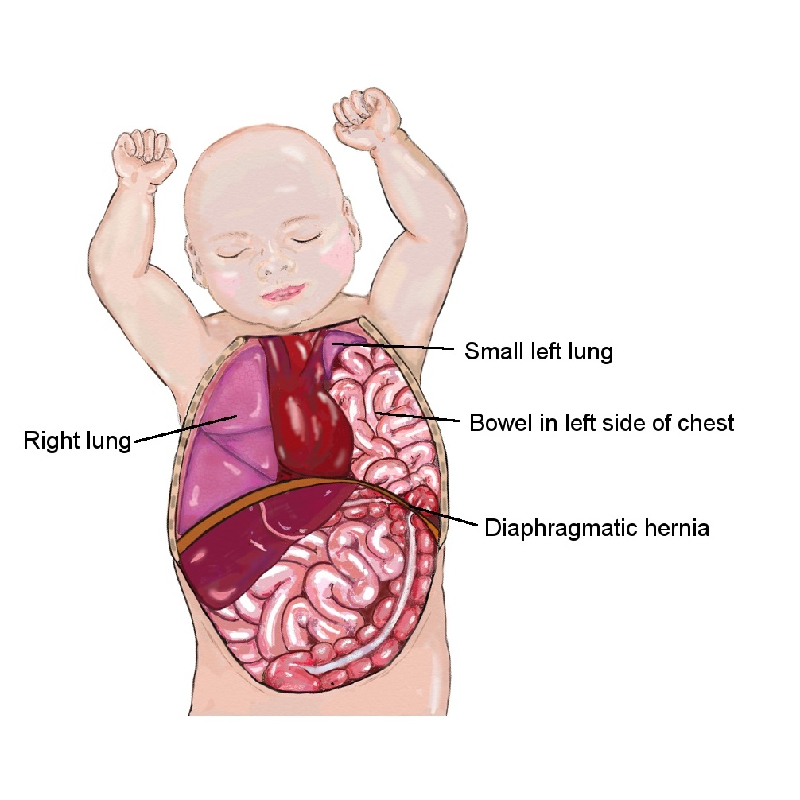Comprehensive Guide to Diaphragmatic Health: Best Diaphragmatic Repair, Voice Therapy, and
Hernia Treatment Options
Understanding diaphragmatic health and its various aspects is essential for managing conditions
effectively. This guide covers the best diaphragmatic repair techniques, diaphragmatic
breathing voice therapy, treatment options for diaphragmatic hernia in newborns, symptoms of
diaphragmatic hernia in adults, diaphragmatic hernia diagnosis, and repair in adults.
Best Diaphragmatic Repair Techniques
Diaphragmatic repair is a crucial surgical procedure for correcting defects in the diaphragm.
Here are some of the best techniques:
- 1. Minimally Invasive Surgery
Minimally invasive surgery, including laparoscopic and thoracoscopic approaches, is
preferred for diaphragmatic repair due to its benefits:
- Reduced Pain: Smaller incisions result in less post-operative pain.
- Quicker Recovery: Patients typically experience faster recovery and shorter
hospital stays.
- Lower Risk of Complications: Minimally invasive techniques reduce the risk of
infection and other complications.
- 2. Open Surgery
In cases where minimally invasive surgery is not feasible, open surgery may be required.
This approach involves a larger incision but can be more effective for complex or large
diaphragmatic defects.
- 3. Prosthetic Mesh Repair
For larger defects, surgeons may use a prosthetic mesh to reinforce the diaphragm. This
technique provides additional support and helps prevent recurrence of the hernia.
Diaphragmatic Breathing Voice Therapy
Diaphragmatic breathing voice therapy is a valuable technique for individuals looking to
improve their vocal performance and manage respiratory conditions. Here are some key points
about this therapy:
- 1. Benefits of Diaphragmatic Breathing
-
Enhanced Voice Control: Diaphragmatic breathing allows for better control over
vocal pitch, volume, and tone.
-
Improved Respiratory Efficiency: This technique promotes efficient breathing,
reducing strain on the vocal cords.
-
Reduced Anxiety: Diaphragmatic breathing can help lower stress levels,
contributing to overall vocal performance.
- 2. Techniques for Diaphragmatic Breathing Voice Therapy
- Deep Breathing Exercises: Practicing deep breaths from the diaphragm rather than
shallow chest breaths.
- Posture Training: Maintaining proper posture to facilitate diaphragmatic
breathing.
- Vocal Warm-Ups: Incorporating diaphragmatic breathing into vocal warm-up routines
to prepare the voice for performance.
Diaphragmatic Hernia in Newborn Treatment
Diaphragmatic hernia in newborns is a serious condition that requires prompt medical attention.
Treatment options include:
- 1. Prenatal Diagnosis and Planning
Early diagnosis through prenatal imaging allows for better planning and preparation for the
newborn’s care. This can include arrangements for immediate postnatal treatment and
specialized surgical teams.
- 2. Surgical Repair
Surgical repair is the primary treatment for diaphragmatic hernia in newborns. The goal is
to reposition the abdominal organs and repair the diaphragmatic defect. Key points include:
- Timing of Surgery: Surgery is usually performed shortly after birth, but the
timing can vary based on the newborn’s condition.
- Postoperative Care: Intensive care monitoring and support are essential
post-surgery to ensure proper recovery and address any complications.
- Supportive Treatments
In addition to surgery, supportive treatments play a crucial role in the newborn’s
recovery:
- Respiratory Support: Mechanical ventilation or ECMO (extracorporeal membrane
oxygenation) may be necessary to support breathing.
- Nutritional Support: Ensuring the newborn receives adequate nutrition for growth
and recovery.
Symptoms of Diaphragmatic Hernia in Adults
Recognizing the symptoms of diaphragmatic hernia in adults is essential for timely diagnosis
and treatment. Common symptoms include:
- Chest Pain: Often mistaken for heart-related issues, chest pain can occur due to the
hernia.
- Difficulty Breathing: Compression of the lungs can lead to shortness of breath and
breathing difficulties.
- Gastrointestinal Issues: Symptoms such as nausea, vomiting, and abdominal pain are
common.
- Reflux: Acid reflux and heartburn may occur due to the displacement of the stomach.
Diaphragmatic Hernia Diagnosis
Accurate diagnosis of a diaphragmatic hernia involves several steps:
- 1. Physical Examination
A thorough physical examination by a healthcare provider to identify any visible signs of
hernia or related symptoms.
- 2. Imaging Studies
- X-rays: Can show the position of abdominal organs.
- CT Scans: Provide detailed images to help locate the hernia.
- MRI: Offers high-resolution images for a precise diagnosis.
- 3. Endoscopy
An endoscopy may be performed to visualize the esophagus and stomach and assess any
hernia-related damage.
- Reflux: Acid reflux and heartburn may occur due to the displacement of the stomach.
Diaphragmatic Hernia Repair in Adults
Repairing a diaphragmatic hernia in adults involves various surgical techniques:
- 1. Laparoscopic Surgery
Minimally invasive laparoscopic surgery is often preferred for its quicker recovery times
and reduced risk of complications.
- 2. Open Surgery
In more complex cases, open surgery may be required to repair the hernia and reposition the
abdominal organs.
- 3. Prosthetic Mesh
Using a prosthetic mesh to reinforce the diaphragm can help prevent recurrence and provide
additional support.
Conclusiom
Understanding the best diaphragmatic repair techniques, diaphragmatic breathing voice therapy,
and treatment options for diaphragmatic hernia in newborns and adults is vital for effective
management and improved outcomes. From minimally invasive surgical approaches to specialized
therapies, various options are available to address these conditions. Taking proactive steps to
seek appropriate care and treatment can significantly enhance quality of life and overall
health.
